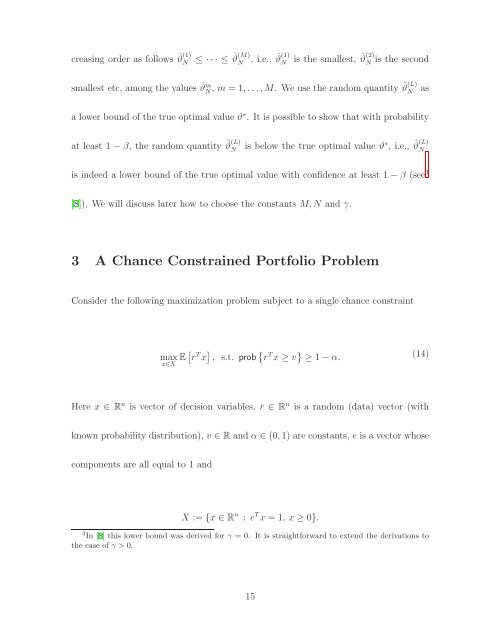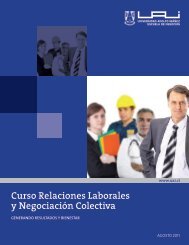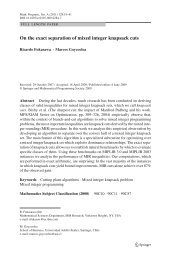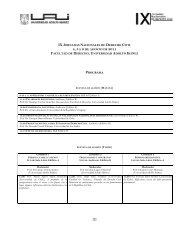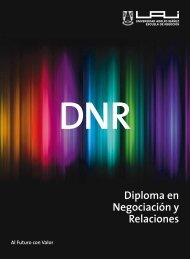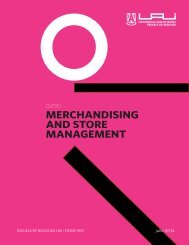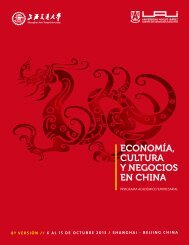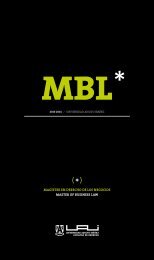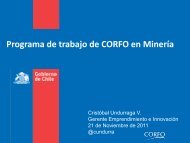Sample Average Approximation Method for Chance Constrained ...
Sample Average Approximation Method for Chance Constrained ...
Sample Average Approximation Method for Chance Constrained ...
- No tags were found...
Create successful ePaper yourself
Turn your PDF publications into a flip-book with our unique Google optimized e-Paper software.
creasing order as followsˆϑ(1)N≤ · · · ≤ ˆϑ(M)N, i.e., ˆϑ(1)N(2)is the smallest, ˆϑNis the secondsmallest etc, among the values ˆϑ m (L)N , m = 1, . . .,M. We use the random quantity ˆϑNasa lower bound of the true optimal value ϑ ∗ . It is possible to show that with probabilityat least 1 − β, the random quantityˆϑ(L)Nis below the true optimal value ϑ∗ , i.e.,ˆϑ(L)Nis indeed a lower bound of the true optimal value with confidence at least 1 − β (see 3[8]). We will discuss later how to choose the constants M, N and γ.3 A <strong>Chance</strong> <strong>Constrained</strong> Portfolio ProblemConsider the following maximization problem subject to a single chance constraintmax E[ r T x ] , s.t. prob { r T x ≥ v } ≥ 1 − α. (14)x∈XHere x ∈ R n is vector of decision variables, r ∈ R n is a random (data) vector (withknown probability distribution), v ∈ R and α ∈ (0, 1) are constants, e is a vector whosecomponents are all equal to 1 andX := {x ∈ R n : e T x = 1, x ≥ 0}.3 In [8] this lower bound was derived <strong>for</strong> γ = 0. It is straight<strong>for</strong>ward to extend the derivations tothe case of γ > 0.15


